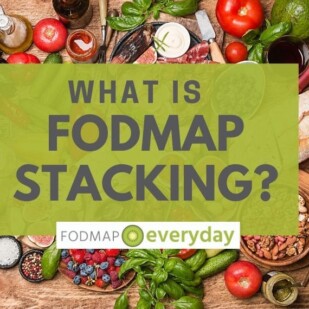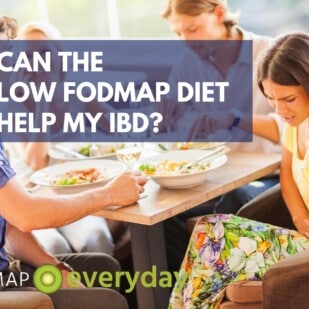Thinking about starting an elimination diet for your child with IBS? Read this article first.
Disclaimer: This article does not pertain to individuals with medical conditions in which dietary restriction is required (such as celiac disease); it is designed for children with general gastrointestinal discomfort and/or irritable bowel syndrome. This article is for informational purposes only and is not designed to replace medical advice or individualized nutrition advice from a Registered Dietitian; always check with your child’s health care team for guidance[MOU1] .
Children Have Digestive Distress, Too
Does your child experience gastrointestinal distress on a daily basis; bloating, gas, abdominal pain, diarrhea, constipation or all of the above? These symptoms can be severe and debilitating for children and have a significant impact on their daily lives, as well as their families
How do you alleviate your child’s symptoms and help them return to enjoying all of the joys of being a kid? While there is no simple answer for this, we will review strategies to consider before making major dietary changes for your child with gastrointestinal symptoms.
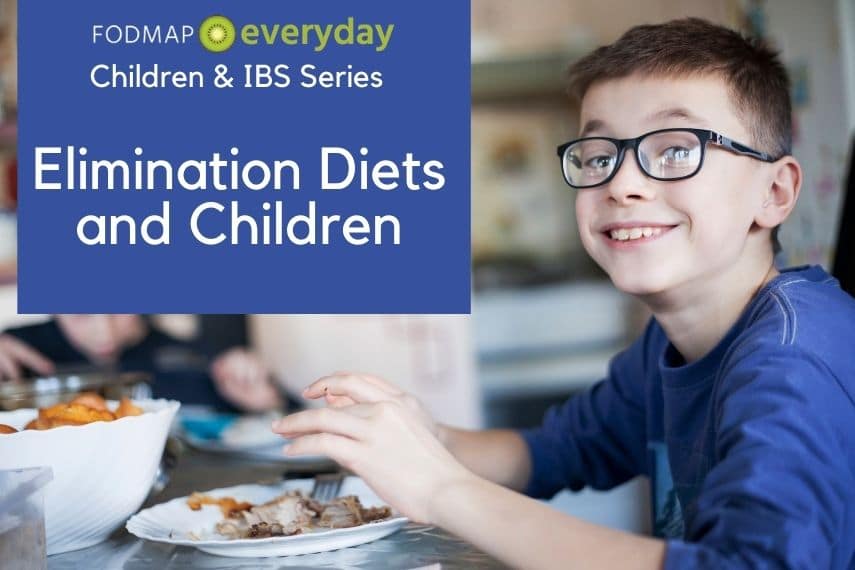
Assessing Approaches
You may have heard from well-meaning friends, family or even seemingly reputable websites on the internet, to remove gluten/dairy/nightshades and the like from your child’s diet to help relieve their tummy troubles.
You might feel overwhelmed, confused and desperate to try anything that might help. Parents and caregivers, we hear you. We know that when your child is uncomfortable or in pain, you will do whatever it takes to help them feel better – parents and caregivers are, seriously, superheroes!
Listen To The RDs
However, before jumping to make a change to a child’s diet, it is important that we take a step back and understand the potential long-term implications of dietary interventions.
Although for adults, it might not seem like a big deal to limit a food or food group to see if it helps with symptoms, children and adolescents are different than adults, therefore the approach we have for children and adolescents must be tailored to suit their unique needs.
We have to take a more nuanced approach with children because:
- Children are in key developmental stages and are at increased risk for malnutrition, nutritional deficiencies and growth faltering with dietary restrictions.
- Children and adolescents with chronic health conditions (including gastrointestinal-related conditions such as irritable bowel syndrome (IBS)) that involve diet as part of treatment are at an increased risk for developing eating disorders (Conviser et al, 2018)[1].
- Although more robust research for specific dietary approaches (such as the low FODMAP diet for IBS) in adults exists, research in children is limited and long-term effects and potential risks are not yet known.
- Dietary changes are not appropriate for all children such as selective eaters, children with an already limited diet, children at risk of malnutrition, children with certain underlying medical conditions and children with an eating disorder or at risk for an eating disorder. Note: appropriate screening from a Registered Dietitian with specialization in pediatrics and a pediatric psychologist may be necessary to determine if dietary changes are appropriate.
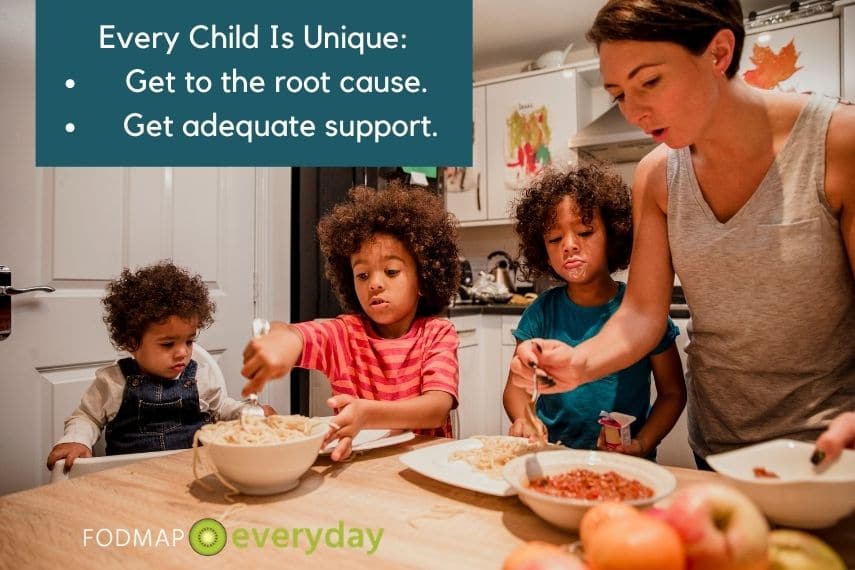
Every Child Is Unique
I know we already took one step back before even considering making a dietary change, but let’s take one more step back before looking at the non-restrictive digestive strategies recommended and take a look at the big picture. There are two key considerations before implementing any interventions, no matter how small:
- Getting to the root cause – It is important to know the exact problem in order to decide on the most appropriate treatment to solve the problem. Similar to how we wouldn’t blindly take medication without first confirming a medical condition, we should not blindly try dietary interventions or digestive strategies before our doctors and medical team have a clear clinical picture. Don’t be afraid to ask your child’s doctor for support; if your child’s doctor is unable to identify the root cause of your child’s digestive symptoms, they might decide to refer you to a pediatric gastroenterologist (or other specialists) for further investigation to help identify the root cause.
- Getting adequate support and an individualized plan – In addition to working with a pediatric gastroenterologist, working with a pediatric Registered Dietitian is strongly recommended for individualized nutrition assessment, ensuring nutritional adequacy, preventing malnutrition, supporting adequate growth, fostering the development of a positive relationship with food and providing much-needed support for children and families in adapting to new changes.
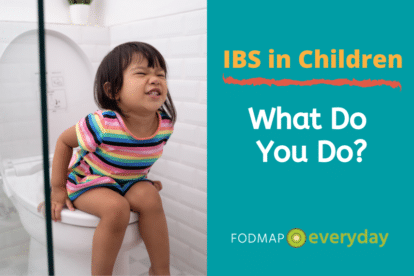
You may want to read: IBS in Children, What Do You Do?
What Are the Next Steps?
Now that you have taken two steps back to understand the potential impacts of dietary change, identify the root cause and get adequate support, it may be the right time to try simple non-restrictive evidence-based digestive strategies to support your child’s symptoms.
Non-restrictive Strategies
Did you know that a dietary elimination, such as the low FODMAP diet, is not recommended as the first line of treatment for children with irritable bowel syndrome?
Monash University recommends two key strategies before making dietary restrictions: A) Ensuring meals are balanced and B) Having a consistent toileting routine. It is important to get the basics before making elaborate changes. This helps reduce dietary restriction which supports a positive relationship with food.
Strategy 1: Balanced Eating
A balanced eating means that there is a variety (or balance) of different food groups at each meal and snack. For example, some children will have multiple servings of fruit in 1 meal or sitting with no other food groups which can overload the digestive system and lead to symptoms. Whereas the same child having fruit spread throughout the day, may not have any symptoms at all because their body has enough time to digest the fruit between meals.
Getting a variety of food groups not only ensures nutritional adequacy but also optimizes digestion because our bodies are designed to digest and absorb a variety of foods at each setting. For children sensitive to FODMAPs having a variety reduces something call FODMAP stacking which is discussed in our article on FODMAP stacking.
What is in a balanced meal or snack? In general, having balance means following your country’s dietary guidelines. In the United States, that is the United States Dietary Guidelines. The suggestion below is adapted from Canada’s Food Guide plate model for meals, the snack plate is almost like a “mini-meal”, also balanced but smaller portions (designed by me).
- Balanced plate (meal): Aim to offer – ¼ whole grains (ex. whole grain breads, whole grain cereals, whole grain rice, grain pasta, couscous, oatmeal), ¼ proteins & healthy fats (ex. legumes & beans, tofu, nuts, seeds, meat, fish, seafood, yogurt, cottage cheese, plant-based oils etc.) & ½ color (variety of whole vegetables, optional: whole fruit)
- Balanced snack plate: Aim to offer – ½ protein (snack size) & ½ complex carbohydrates (carbohydrates with a source of fiber which include whole grains, whole fruits and starchy veggies)
Note: for optimal digestion, a smaller portion of fruit at 2-3 meals/day is recommended vs multiple servings of fruit at one sitting.

Strategy 2: Toileting Routine
A consistent toileting routine helps children open their bowels more regularly which can help children with irregular stool patterns, stool holding, incontinence or constipation.
Some children have difficulty going to the bathroom regularly because it can be difficult to differentiate the sensation of a bowel movement with other abdominal sensations such as nervousness.
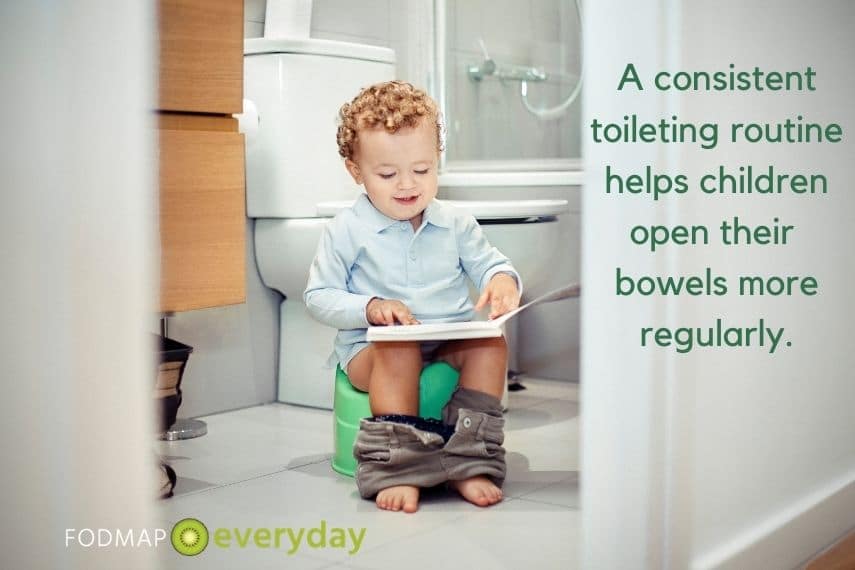
Additionally, children are busybodies and can simply forget to go to the bathroom when they are playing or having fun.
A good time to have your child try to empty their bowels is after meals (when the gastrocolic reflex is triggered and food is moving through the digestive tract). A consistent toileting routine shouldn’t be overlooked. Your child’s health care team can help you design an appropriate routine for your little one.
Strategies 3 & 4: Fluid and Fiber
You can think of fluid and fiber as two best friends when it comes to keeping your child’s digestive system moving regularly and effectively.
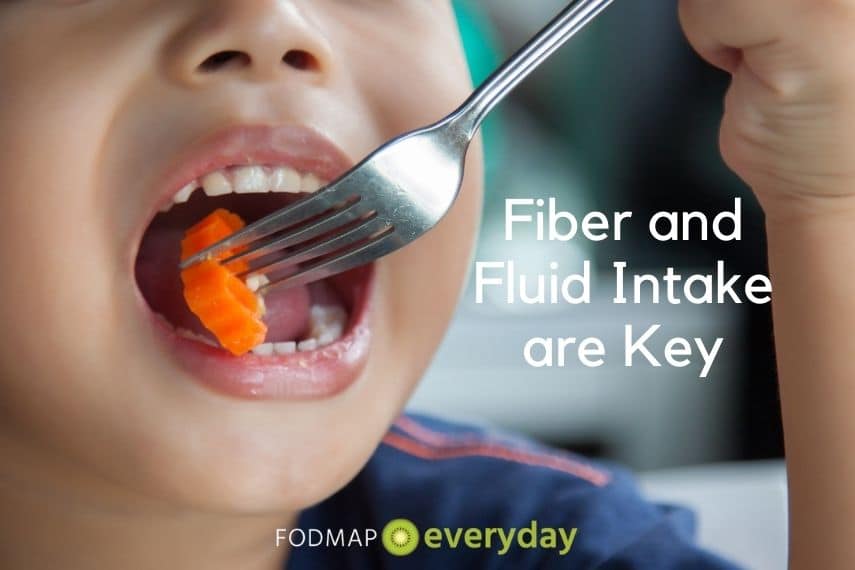
You can review our article, Fiber & IBS: What You Need To Know.
Fluid is listed first because adequate clear fluid intake daily (water, infused water or herbal tea) is important to establish first before fiber is increase.
Fiber absorbs water and too much fiber without enough fluid can cause dry hard stools. Overload of fiber and dry stools in the bowels can cause children to become even more backed up, which can worsen symptoms and can lead to medical complications in severe cases.

See the chart below for the average recommended clear fluid intake for children.
| Age | Average Intake (Dietary Reference Intakes – Health Canada)*includes water, beverages and water in food |
|---|---|
| Boys | |
| 4-8 years | 1.7 L/day |
| 9-13 years | 2.4 L/day |
| 14-18 years | 3.3 L/day |
| Girls | |
| 4-8 years | 1.7 L/day |
| 9-13 years | 2.1 L/day |
| 14-18 years | 2.3 L /day |
Fiber intake has been studied in a variety of randomized control trials in children with functional abdominal pain disorders and the results consistently show benefit. Most children are not meeting their fiber requirements; see the chart below for the average recommended intakes of fiber in children (Canadian data).
| Age | Average Intake (Dietary Reference Intakes – Health Canada) |
|---|---|
| Boys | |
| 4-8 years | 25 grams/day |
| 9-13 years | 31 grams/day |
| 14-18 years | 38 grams/day |
| Girls | |
| 4-8 years | 25 grams/day |
| 9-13 years | 26 grams/day |
| 14-18 years | 26 grams/day |
Eating at home as often as possible, including plant-based meals and having whole foods can help children meet their fiber requirements. Some low fermentable (gas-producing) fiber sources recommended for children are psyllium fiber, chia seeds, ground flaxseed, oranges, strawberries, raspberries, kiwi, oats, zucchini, broccoli and carrots.
Download Fiber & IBS E-book for 99¢
Strategy 5: Psychological Strategies
Psychological support has been shown to be an effective management option in children with irritable bowel syndrome, however, psychological support is not accessible for every family. Gut-directed hypnotherapy is an option that may be more readily available and can even be done at home for children that are unable to receive support from a psychologist.
Research suggests that gut-directed hypnotherapy is effective in decreasing pain and improving quality of life in children with functional abdominal pain or irritable bowel syndrome.
These results were consistent in both groups that implemented gut-directed hypnotherapy with a trained therapist and children that implemented self-directed gut-directed hypnotherapy at home. In adults, gut-directed hypnotherapy has been even shown to have similar effectiveness when compared to the low FODMAP diet.

Keep Food Relationships Healthy, Too
Having psychological support is important for all children with digestive troubles because they are at an increased risk of developing eating disorders or a negative relationship with food.
In addition to helping cope with the psychological impacts of digestive symptoms, psychological therapies such as gut-directed hypnotherapy have been shown to act as an important treatment for digestive health conditions, inducing remission in children with irritable bowel syndrome without any dietary restriction!

You May Want to Read: Meet Nerva: The Science Backed App For Managing IBS With Hypnotherapy
Strategy 6: Gentle Movement
It is recommended for all children and adolescents to include physical activity daily. In addition to general health, movement is very beneficial for the digestive system. Incorporating gentle movement daily, such as walking, yoga, stretching or playing with friends can help trapped gas escape and improve bowel regularity.

What Is Next?
If you have exhausted the options above (implemented consistently) with your child’s health care team, it may be time to address dietary intolerances.
Current guidelines recommend dietary interventions such as the low FODMAP diet only is implemented with support from a pediatric dietitian with experience in pediatrics and gastroenterology.
The Takeaways
- If your child is experience gastrointestinal symptoms, ensure you get to the root cause before making dietary changes
- Children with dietary changes should have support from a pediatric gastroenterologist, a pediatric Registered Dietitian and other health care professionals such as a psychologist and pelvic floor physiotherapist. A team approach is best.
- Children and adolescents who have chronic health conditions, especially gastrointestinal related, are at increased risk for eating disorders. Dietary restrictions are not suitable or appropriate for every child.
- Before trying digestive strategies, ensure your child is eating balanced meals and has a consistent toileting routine.
- After balanced eating and toileting routine are consistently implemented you may want to try other non-restrictive dietary strategies such as fluid adjustment, fiber adjustment, psychological strategies and gentle movement.
References
- Conviser, J. H., Fisher, S. D., & McColley, S. A. (2018). Are children with chronic illnesses requiring dietary therapy at risk for disordered eating or eating disorders? A systematic review. The International journal of eating disorders, 51(3), 187–213. https://doi-org.myaccess.library.utoronto.ca/10.1002/eat.22831
- Chumpitazi, B. P., Cope, J. L., Hollister, E. B., Tsai, C. M., McMeans, A. R., Luna, R. A., Versalovic, J., & Shulman, R. J. (2015). Randomised clinical trial: gut microbiome biomarkers are associated with clinical response to a low FODMAP diet in children with the irritable bowel syndrome. Alimentary pharmacology & therapeutics, 42(4), 418–427. https://doi-org.myaccess.library.utoronto.ca/10.1111/apt.13286
- Chumpitazi, B. P., Hollister, E. B., Oezguen, N., Tsai, C. M., McMeans, A. R., Luna, R. A., Savidge, T. C., Versalovic, J., & Shulman, R. J. (2014). Gut microbiota influences low fermentable substrate diet efficacy in children with irritable bowel syndrome. Gut microbes, 5(2), 165–175. https://doi-org.myaccess.library.utoronto.ca/10.4161/gmic.27923
- Dogan, G., Yavuz, S., Aslantas, H., Ozyurt, B. C., & Kasirga, E. (2020). Is low FODMAP diet effective in children with irritable bowel syndrome?. Northern clinics of Istanbul, 7(5), 433–437. https://doi-org.myaccess.library.utoronto.ca/10.14744/nci.2020.40326.
- Monash University Low FODMAP for Dietitians Training – Module 10.
- Christensen M. F. (1986). Recurrent abdominal pain and dietary fiber. American journal of diseases of children (1960), 140(8), 738–739. https://doi-org.myaccess.library.utoronto.ca/10.1001/archpedi.1986.02140220020009.
- Feldman, W., McGrath, P., Hodgson, C., Ritter, H., & Shipman, R. T. (1985). The use of dietary fiber in the management of simple, childhood, idiopathic, recurrent, abdominal pain. Results in a prospective, double-blind, randomized, controlled trial. American journal of diseases of children (1960), 139(12), 1216–1218. https://doi-org.myaccess.library.utoronto.ca/10.1001/archpedi.1985.02140140050025.
- Horvath, A., Dziechciarz, P., & Szajewska, H. (2013). Glucomannan for abdominal pain-related functional gastrointestinal disorders in children: a randomized trial. World journal of gastroenterology, 19(20), 3062–3068. https://doi-org.myaccess.library.utoronto.ca/10.3748/wjg.v19.i20.3062.
- Shulman, R. J., Hollister, E. B., Cain, K., Czyzewski, D. I., Self, M. M., Weidler, E. M., Devaraj, S., Luna, R. A., Versalovic, J., & Heitkemper, M. (2017). Psyllium Fiber Reduces Abdominal Pain in Children With Irritable Bowel Syndrome in a Randomized, Double-Blind Trial. Clinical gastroenterology and hepatology : the official clinical practice journal of the American Gastroenterological Association, 15(5), 712–719.e4. https://doi-org.myaccess.library.utoronto.ca/10.1016/j.cgh.2016.03.045.
- Dietary Reference Intakes. Health Canada Website. https://www.canada.ca/en/health-canada/services/food-nutrition/healthy-eating/dietary-reference-intakes/tables.html. Updated November 28, 2010. Accessed July 5, 2017.
- Peters, S. L., Yao, C. K., Philpott, H., Yelland, G. W., Muir, J. G., & Gibson, P. R. (2016). Randomised clinical trial: the efficacy of gut-directed hypnotherapy is similar to that of the low FODMAP diet for the treatment of irritable bowel syndrome. Alimentary pharmacology & therapeutics, 44(5), 447–459. https://doi-org.myaccess.library.utoronto.ca/10.1111/apt.13706.
- Rutten, J. M., Reitsma, J. B., Vlieger, A. M., & Benninga, M. A. (2013). Gut-directed hypnotherapy for functional abdominal pain or irritable bowel syndrome in children: a systematic review. Archives of disease in childhood, 98(4), 252–257. https://doi-org.myaccess.library.utoronto.ca/10.1136/archdischild-2012-302906.
- Rutten, J., Vlieger, A. M., Frankenhuis, C., George, E. K., Groeneweg, M., Norbruis, O. F., Tjon A Ten, W., van Wering, H. M., Dijkgraaf, M., Merkus, M. P., & Benninga, M. A. (2017). Home-Based Hypnotherapy Self-exercises vs. Individual Hypnotherapy With a Therapist for Treatment of Pediatric Irritable Bowel Syndrome, Functional Abdominal Pain, or Functional Abdominal Pain Syndrome: A Randomized Clinical Trial. JAMA pediatrics, 171(5), 470–477. https://doi-org.myaccess.library.utoronto.ca/10.1001/jamapediatrics.2017.0091.
- Gulewitsch, M. D., & Schlarb, A. A. (2017). Comparison of gut-directed hypnotherapy and unspecific hypnotherapy as self-help format in children and adolescents with functional abdominal pain or irritable bowel syndrome: a randomized pilot study. European journal of gastroenterology & hepatology, 29(12), 1351–1360. https://doi-org.myaccess.library.utoronto.ca/10.1097/MEG.0000000000000984

